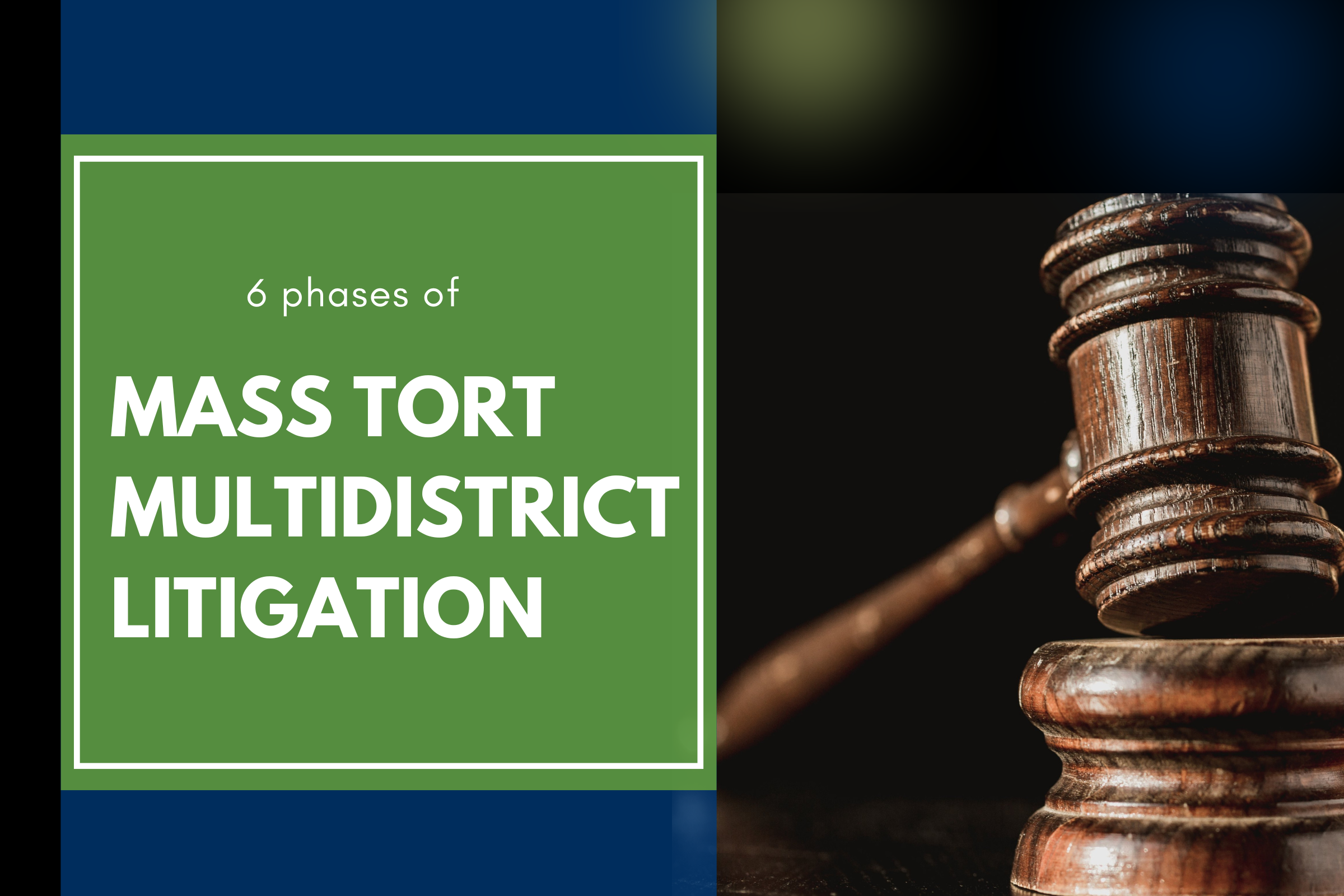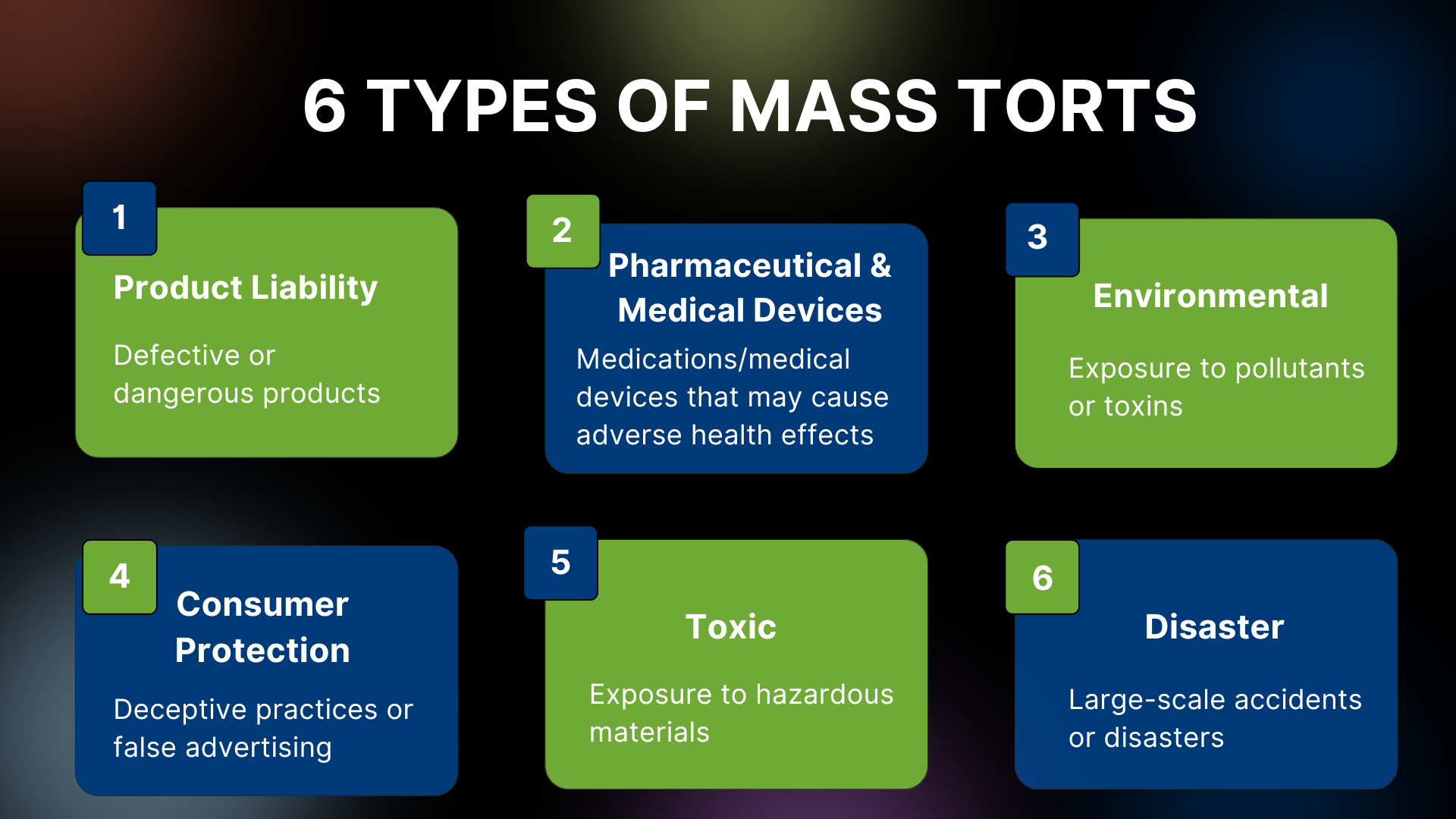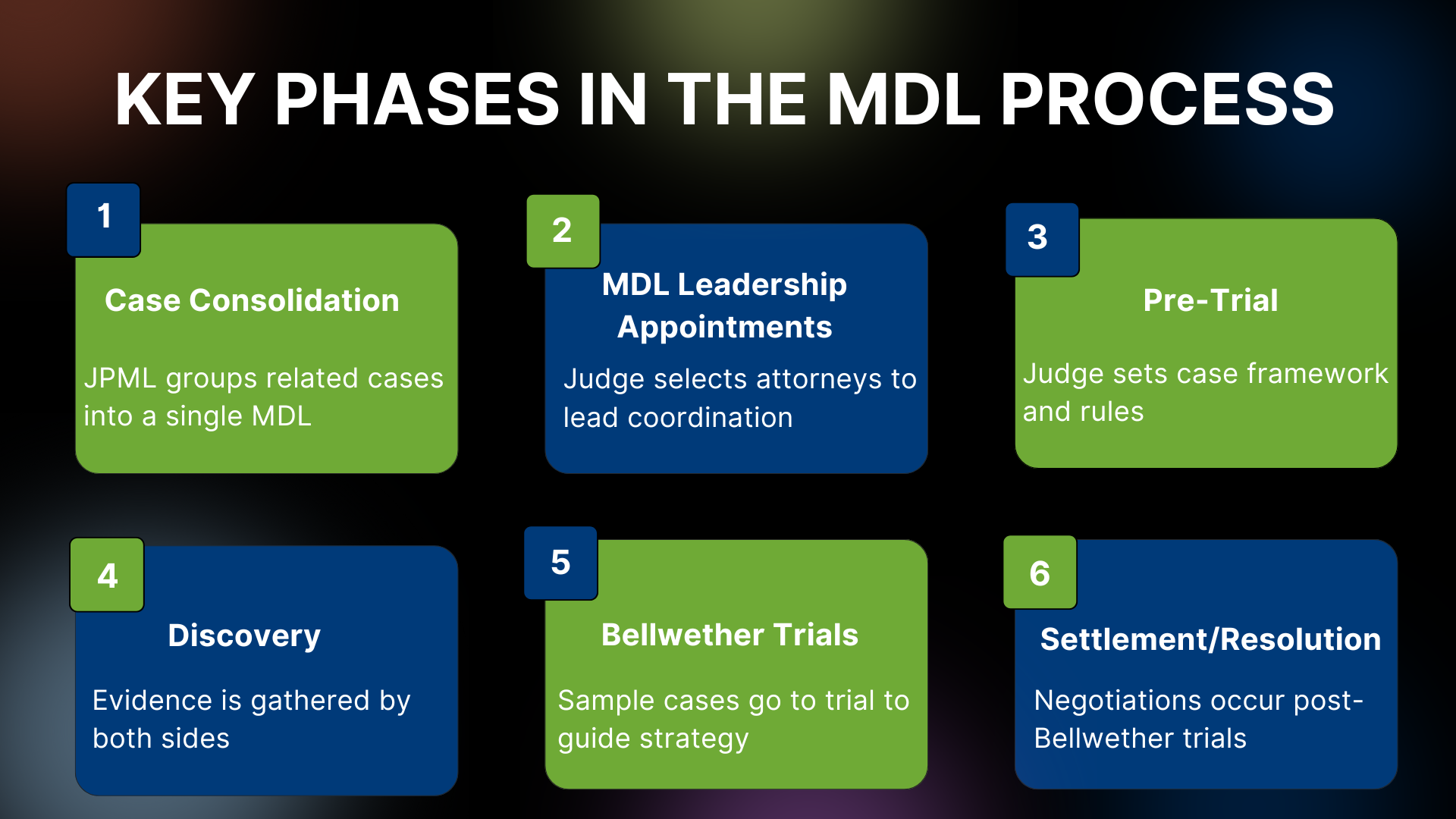
What is a Mass Tort?
A mass tort is a civil action involving numerous plaintiffs against one or more defendants in state or federal court through the same alleged act of harm. The issues alleged by plaintiffs in mass tort litigation are similar, but their factual situations differ significantly.
Unlike a class action where one lawsuit represents an entire group, a mass tort treats each case individually. Mass tort cases can become very complex.
Mass torts are common in cases involving defective products, pharmaceuticals, medical devices, environmental disasters, or large-scale accidents. By consolidating these individual claims into one federal court, mass tort legal proceedings and discovery management are streamlined.

6 Types of Mass Torts
- Product Liability
Defective or dangerous products
2. Pharmaceutical and Medical Devices
Medications or medical devices that may have caused adverse health effects
3. Environmental
Exposure to pollutants or toxins
4. Consumer Protection
Deceptive practices or false advertising
5. Toxic
Exposure to hazardous materials
6. Disaster
Large-scale accidents or disasters
What is Multidistrict Litigation (MDL)?
Multidistrict litigation (MDL) is a legal process that consolidates multiple civil cases with common issues into one federal court to streamline the pretrial proceedings. It is typically used when lawsuits from across the country involve similar claims against a common defendant. The goal of the MDL is to make the litigation process efficient, reducing duplicate discovery and inconsistent rulings while preserving the individual aspects of each case.
Once pretrial proceedings are complete, cases may be sent back to their original courts for trial if they do not settle or resolve during the MDL process. This approach helps manage complex, large-scale litigations while balancing efficiency and fairness.

6 Phases of Mass Tort Multidistrict Litigation (MDL)
1. Cases are consolidated into an MDL
Multiple related cases are grouped into one MDL by the Judicial Panel on Multidistrict Litigation (JPML). The single MDL is based on the cases having one or more common questions or fact in common. The purpose of MDL consolidation is to improve efficiency, reduce duplicative discovery, and avoid inconsistent pretrial rulings by bringing all cases under the jurisdiction of one federal court.
2. MDL Leadership Appointments
After consolidation, the presiding judge selects a leadership team of attorneys to coordinate the litigation. Attorneys apply for these roles, and the presiding judge selects a team based on experience, relevance to the case, and ability to represent diverse interests. There are many ways to structure the leadership team, what works for one MDL often does not work for another.
For plaintiffs, the leadership structure typically consists of a lead counsel who oversees case strategy, coordinates with other attorneys, manages discovery, and represents the interests of all plaintiffs collectively. To support this role, a steering committee can also be appointed to assist with tasks such as expert preparation, document review, and trial prep.
For the defense, usually, a Defense Liaison Counsel is appointed to simplify the communication and logistics with the court. The role coordinates collective needs of the defense to ensure effective case management. A Defense Steering Committee may also be appointed to help with defense strategies, witness preparation, and case management.
3. Pre-Trial
The pre-trial phase has an important impact on the litigation process, as it determines how the case will proceed. During the court proceeding, both sides present motions related to the case structure, trial procedures, and other considerations. The judge often sets the framework for the trial phase.
4. Discovery
During discovery, both parties gather evidence to build their own case. The evidence can include depositions, document production, and interrogatories, along with expert reports and witness testimonies. Since the discovery phase can be lengthy depending on the type of case or project, it may take years in large MDLs, as the volume of documentation is often large. Typically, during this phase, litigation support partners are brought in to help streamline and manage the process by offering services such as e-discovery, document review, record collection, medical record analysis, settlement support, and more.
5. Bellwether Trials
Bellwether trials are selected cases that proceed to trial to see how jurors react to the evidence and arguments. The outcome of the initial cases guides both sides in determining the value of the claims.
6. Settlement/Resolution
After the Bellwether trials, parties often enter settlement negotiations. Bellwether trial outcomes usually have an impact on these discussions. The goal of settlement is to reach a fair resolution for most plaintiffs. If a settlement cannot be reached, the cases are sent back to their original courts for individual trials. Successful settlement often leads to fund distribution among plaintiffs based on various factors.
40 Years of Experience in Complex Mass Tort Multidistrict Litigation
With 40 years of unparalleled experience in mass tort litigation, LMI has built an impressive strategic toolbox to navigate even the most unique circumstances. We partner with plaintiff counsel, defense counsel, judges, mediators, and more to help guide you to successful matter resolution. Every project is approached with a customized lens to fit the needs of each client and/or matter. From initial census to discovery all the way through settlement, we have your back.
Contact us today for a free consultation.